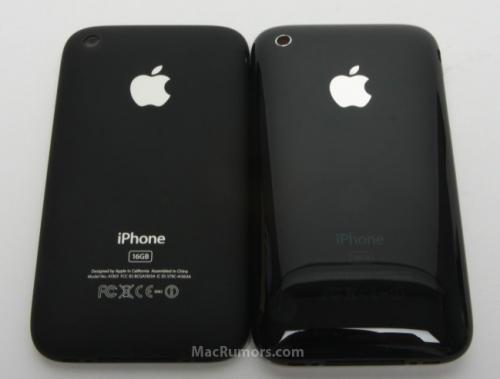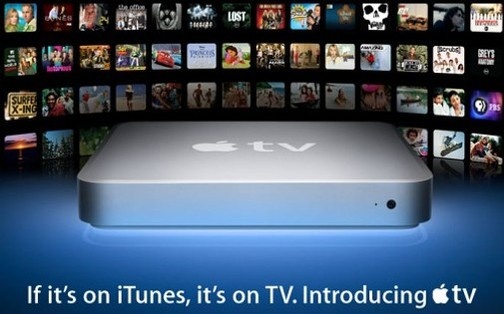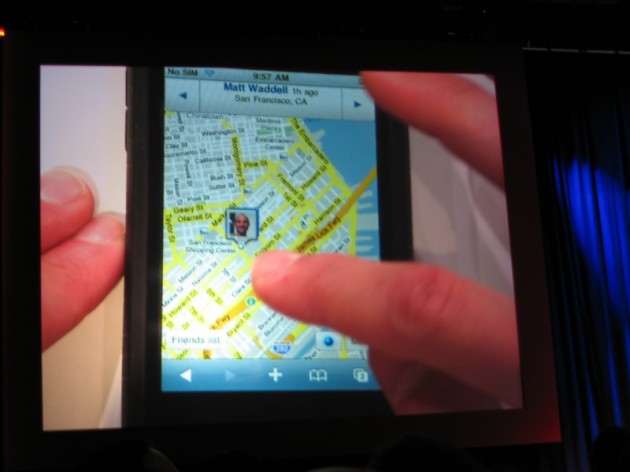 The iPhone’s sole US carrier, AT&T, today made some pretty significant announcements at the AllThingsD conference. They will continue to roll out 3G to more markets (20), upgrade to 7.2 Mbs equipment and begin deployment of 4G LTE networks in 2011. AT&T is also doubling its spectrum and adding more towers to cover more areas including the inside of buildings. AT&T’s 2009 initiatives also include:
The iPhone’s sole US carrier, AT&T, today made some pretty significant announcements at the AllThingsD conference. They will continue to roll out 3G to more markets (20), upgrade to 7.2 Mbs equipment and begin deployment of 4G LTE networks in 2011. AT&T is also doubling its spectrum and adding more towers to cover more areas including the inside of buildings. AT&T’s 2009 initiatives also include:
- Near-Doubling Radio Frequency Capacity. In 2008 and 2009 to date, high-quality 850 MHz spectrum has been deployed in more than half of AT&T’s 3G network footprint to improve overall coverage and in-building reception, with additional markets planned for later in the year.
- More Bandwidth to Cell Sites. We are adding fiber-optic connectivity and additional capacity to thousands of cell sites across the country this year, expanding the critical connections that deliver traffic from a cell site into the global IP backbone network. These upgrades will support the higher mobile broadband speeds enabled by both HSPA 7.2 and LTE.
- More Cell Sites. Deployment of about 2,100 new cell sites across the country.
- Wi-Fi Integration. Many AT&T smartphones will be able to switch seamlessly between 3G and Wi-Fi connectivity. AT&T customers with qualifying smartphone and 3G LaptopConnect plans have access to the nation’s largest Wi-Fi network – more than 20,000 hotspots, including locations in all 50 states – at no additional charge. AT&T’s global Wi-Fi footprint covers more than 90,000 hotspots, and AT&T also can create permanent or temporary extended Wi-Fi zones in areas with high 3G network use, like a grouping of hotels or a festival.
- MicroCells. Customer trials leading toward general availability of AT&T 3G MicroCell offerings, which utilize femtocells to enhance in-building wireless coverage.
Press Release follows:
AT&T* today announced plans to upgrade the nation’s fastest 3G network to deliver considerably faster mobile broadband speeds. The network upgrades are slated to begin later this year, with completion expected in 2011.
The upgrade to High Speed Packet Access (HSPA) 7.2 technology is part of AT&T’s plan for continued investments to deliver the nation’s best mobile broadband experience – the ideal combination of speed, coverage and best device line-up. AT&T today has the nation’s fastest 3G network and has attracted more than twice the number of smartphone users than any other competitor.
With its network built on the 3G UMTS technology that is commonly deployed throughout the world, AT&T can boost the speed of its mobile broadband network and offer a wide variety of devices to take advantage of it well in advance of 2011-2012, when most industry observers expect 4G LTE networks and device availability to scale. AT&T plans to begin LTE trials in 2010, with deployment beginning in 2011.
In addition to the planned speed upgrade, AT&T is enhancing its mobile broadband coverage by nearly doubling the wireless spectrum dedicated to 3G in most metropolitan areas to deliver stronger in-building reception and more overall network capacity. Also, AT&T is adding thousands of new cell site backhaul connections to support the higher mobile broadband speeds enabled by HSPA 7.2 and LTE.
“AT&T’s network infrastructure gives us a tremendous advantage in that we’re able to deliver upgrades in mobile broadband speed and performance with our existing technology platform,” said Ralph de la Vega, president and CEO, AT&T Mobility and Consumer Markets. “With the array of smartphones, laptops and emerging devices taking advantage of AT&T’s 3G network today, we know that customers are excited to experience higher mobile broadband speeds, and we are deploying the right technologies at the right times to help them get the most from that experience.”
The upgraded network platform could allow for theoretical peak speeds of 7.2Mbps. Typical real-world downlink and uplink speeds experienced by customers with upgraded 3G will be less than the theoretical peak and will vary based on a number of factors, including location, device, and overall traffic on the local network at a given time.
AT&T’s 3G mobile broadband network is now available in nearly 350 U.S. major metropolitan areas, with about 20 additional metro areas planned for deployment in 2009. The HSPA 7.2 technology will be deployed widely in the network, with the benefits of the network upgrade to be announced on a local basis as the faster speeds are turned up. AT&T will introduce multiple HSPA 7.2-compatible laptop cards and smartphones beginning later this year.
The speed upgrade is one of several ongoing initiatives to expand and enhance AT&T’s mobile broadband service. Other key projects in 2009 include:
- Near-Doubling Radio Frequency Capacity. In 2008 and 2009 to date, high-quality 850 MHz spectrum has been deployed in more than half of AT&T’s 3G network footprint to improve overall coverage and in-building reception, with additional markets planned for later in the year.
- More Bandwidth to Cell Sites. We are adding fiber-optic connectivity and additional capacity to thousands of cell sites across the country this year, expanding the critical connections that deliver traffic from a cell site into the global IP backbone network. These upgrades will support the higher mobile broadband speeds enabled by both HSPA 7.2 and LTE.
- More Cell Sites. Deployment of about 2,100 new cell sites across the country.
- Wi-Fi Integration. Many AT&T smartphones will be able to switch seamlessly between 3G and Wi-Fi connectivity. AT&T customers with qualifying smartphone and 3G LaptopConnect plans have access to the nation’s largest Wi-Fi network – more than 20,000 hotspots, including locations in all 50 states – at no additional charge. AT&T’s global Wi-Fi footprint covers more than 90,000 hotspots, and AT&T also can create permanent or temporary extended Wi-Fi zones in areas with high 3G network use, like a grouping of hotels or a festival.
- MicroCells. Customer trials leading toward general availability of AT&T 3G MicroCell offerings, which utilize femtocells to enhance in-building wireless coverage.
Capital investment for these projects fits within AT&T’s previously outlined expectation of total capital expenditures for 2009, targeted toward the $17 billion to $18 billion range. AT&T matches this network investment with unsurpassed choice in the range of devices, services and applications compatible with its 3G network. AT&T offers a wide variety of devices from more than a dozen manufacturers, including handsets that are compatible with six different operating systems and five different e-mail applications. Our Media Mall 2.0 offers more than 90,000 content options, and customers can download additional applications over the Internet. Additionally, AT&T supports a community of more than 20,000 application developers via its devCentral portal.
HSPA 7.2 is part of the 3rd Generation Partnership Project (3GPP) family of technologies, which include GSM and UMTS. Emerging LTE technology is also part of the 3GPP technology roadmap, enabling AT&T’s network to offer backward compatibility, or the ability for users with qualifying devices to seamlessly switch among 4G LTE, 3G and 2G service areas to maintain the fastest-available connection. This availability will be critical for customers in the early years of LTE deployment across the industry, when access to LTE service will be geographically limited.
From the Toys Section:


.png)
.png)





.png)





